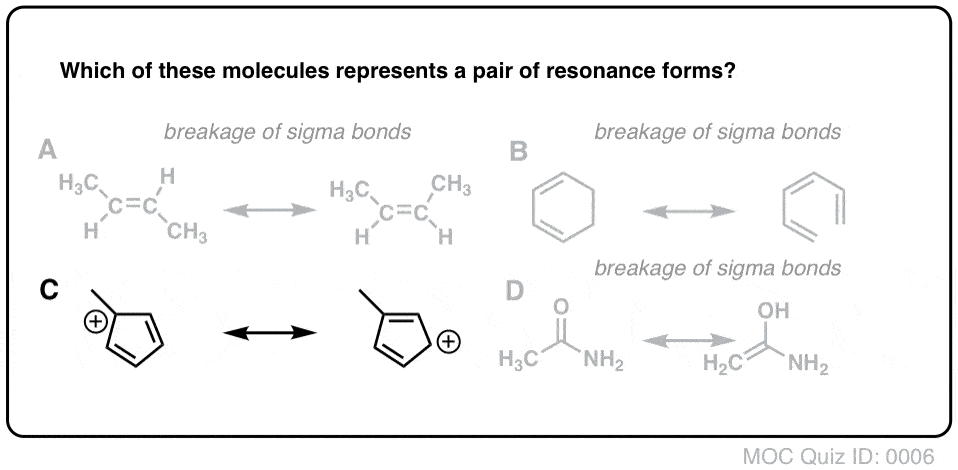
Some resonance structures are more favorable than others. A molecule that has several resonance structures is more stable than one with fewer. The net sum of valid resonance structures is defined as a resonance hybrid, which represents the overall delocalization of electrons within the molecule. Resonance structures are used when one Lewis structure for a single molecule cannot fully describe the bonding that takes place between neighboring atoms relative to the empirical data for the actual bond lengths between those atoms.

These structures are written with a double-headed arrow between them, indicating that none of the Lewis structures accurately describes the bonding but that the actual structure is an average of the individual resonance structures. Resonance is a mental exercise and method within the Valence Bond Theory of bonding that describes the delocalization of electrons within molecules. Some molecules have two or more chemically equivalent Lewis electron structures, called resonance structures. Single bonds, double bonds, triple bonds, +1 charges, -1 charges, these are our limitations in explaining the structures, and the true forms can be in between - a carbon-carbon bond could be mostly single bond with a little bit of double bond character and a partial negative charge, for example. Resonance structures is a mechanism that allows us to use all of the possible resonance structures to try to predict what the actual form of the molecule would be. The best measurements that we can make of benzene do not show two bond lengths - instead, they show that the bond length is intermediate between the two resonance structures. One would expect the double bonds to be shorter than the single bonds, but if one overlays the two structures, you see that one structure has a single bond where the other structure has a double bond. The difference in energy between structure 1 or 2 or 3, (most stable canonical structure) and structure 4 (resonance hybrid) is called resonance energy.\). It is found that the energy of the resonance hybrid (structure 4) is lower than that of all possible canonical structures (Structure 1, 2 & 3). However, the following structure gives a qualitative idea about the correct structure. It is not possible to picturise the resonance hybrid by drawing a single Lewis structure. It is important to note that carbonate ion does not change from one structure to another and vice versa. The actual structure of the molecules is said to be the resonance hybrid, an average of these three resonance forms. It is evident from the experimental results that all carbon-oxygen bonds in carbonate ion are equivalent. Such structures are called resonance structures (canonical structures) and this phenomenon is called resonance. They only differ in the position of bonding and lone pair of electrons. In this case, we can draw two additional Lewis structures by moving the lone pairs from the other two oxygens (O B and O C) thus creating three similar structures as shown below in which the relative position of the atoms are same. It is the wandering of pi electrons within a molecule.

Total number of valence electrons = + + = 24 electrons.ĭistribution of these valence electrons gives us the following structure.Ĭomplete the octet for carbon by moving a lone pair from one of the oxygens (O A) and write the charge of the ion (2-) on the upper right side as shown in the figure. Resonance is an imaginary concept developed to explain the unexceptional stability of certain molecules. The skeletal structure of carbonate ion (The oxygen atoms are denoted as O A, O B & O C For example let us consider the Lewis structure of carbonate ion 2. When we write Lewis structures for a molecule, more than one valid Lewis structures are possible in certain cases.


 0 kommentar(er)
0 kommentar(er)
